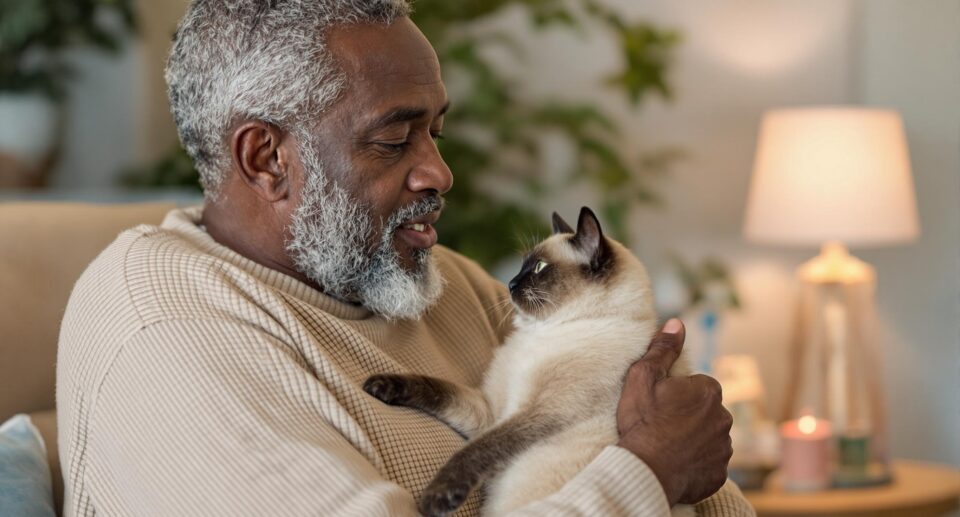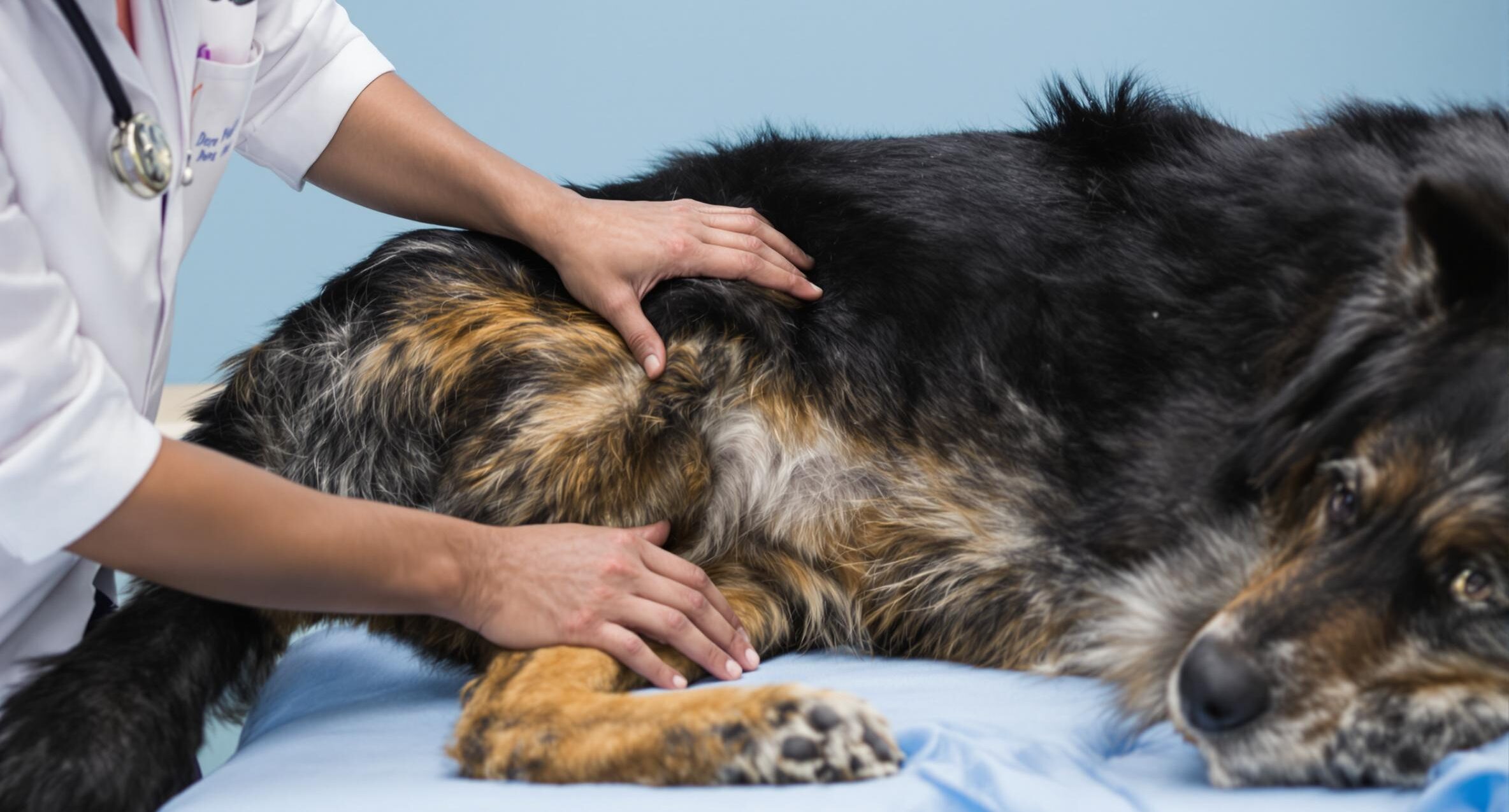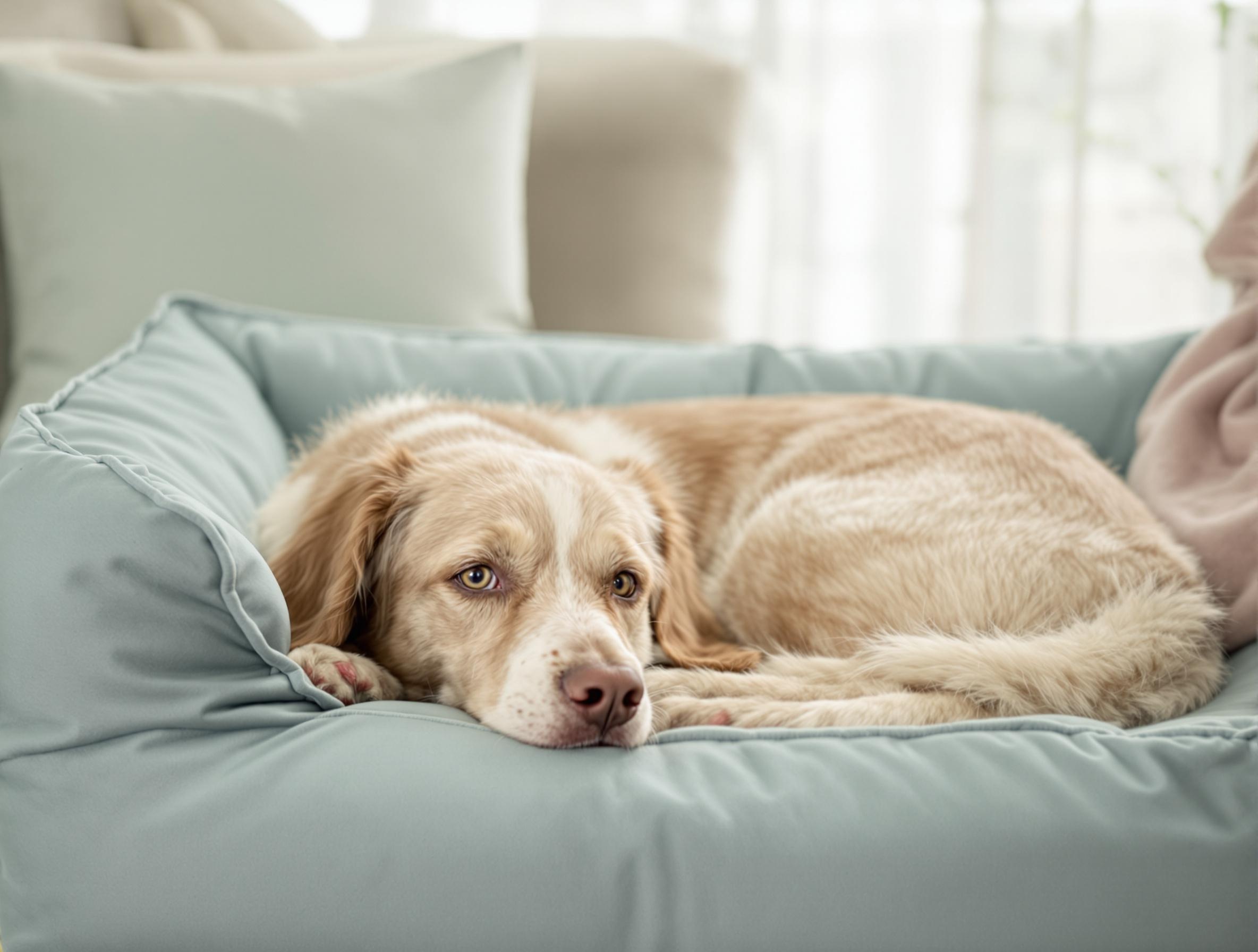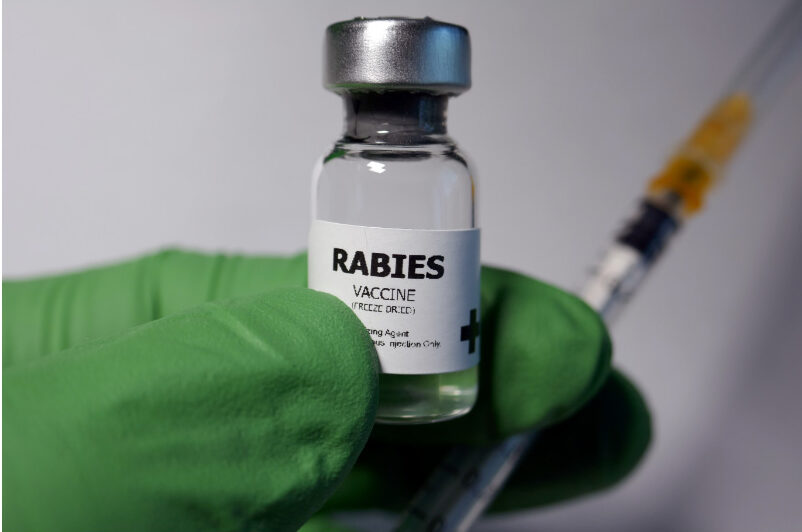Dog Proof Garbage Can: The Ultimate Solution for Home Cleanliness
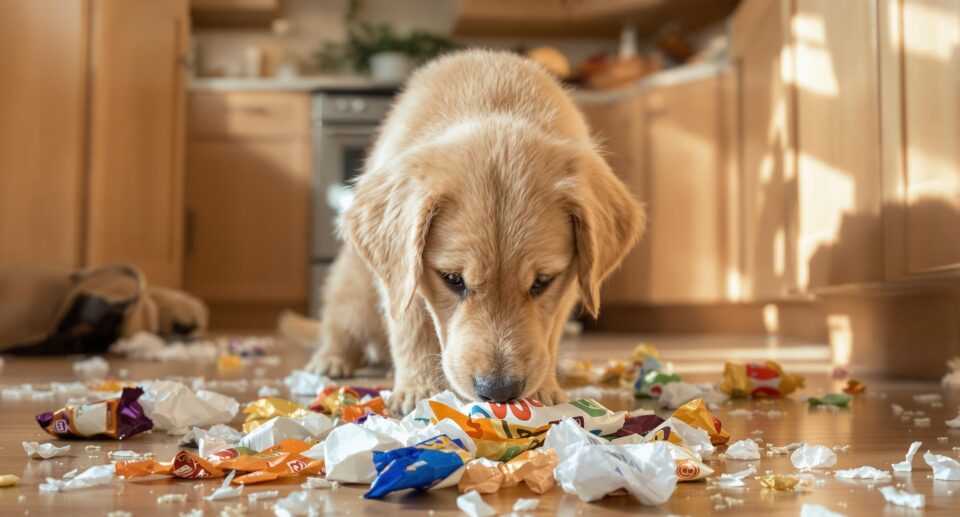
Key Takeaways
- A dog proof garbage can ensures a cleaner home and protects your pet from health hazards caused by scavenging through trash.
- Dogs are drawn to trash due to their strong sense of smell and natural instincts, making proper waste containment essential for their safety.
- Combining the use of pet proof trash cans with positive training techniques can effectively prevent dogs from accessing harmful household waste.
Why a Dog Proof Garbage Can Matters
Coming home to find your kitchen floor scattered with last night’s leftovers is an all too familiar scene for many dog owners. While our curious beloved pets naturally investigate interesting scents and food items, this behavior creates more than just cleanup challenges.
A dog proof garbage can plays a key role in keeping your home safe and your dog healthy. Curious pups especially larger breeds can easily get into regular trash cans, exposing themselves to spoiled food, sharp objects, or other hazards. Choosing a secure, well designed waste system helps prevent those risks.
It also sets clear boundaries, reinforcing good habits around food and space. PetHealthMD is here to help you find the right solution for your household so that you can enjoy a cleaner house and a happier, healthier dog.
Why Dogs Are Drawn to Trash and the Risks Involved
A dog’s remarkable sense of smell, which is significantly more sensitive than humans, makes garbage an enticing target for exploration. This behavior stems from deeply rooted scavenging instincts inherited from their wolf ancestors. When these natural drives combine with the rich aromas of discarded food, many dogs find traditional garbage bins impossible to resist. Periods of limited mental stimulation or boredom can intensify this natural investigative behavior.
Food related hazards in household trash present serious health concerns for dogs. Raw meat remnants can harbor dangerous bacteria, while cooked bones pose choking and perforation risks. Common items like coffee grounds, moldy foods, and sugar free products containing xylitol can lead to severe digestive issues, organ damage, or toxic reactions requiring immediate veterinary care. These health emergencies often develop rapidly, making prevention necessary.
Prevention starts with selecting the right garbage storage solution. Modern dog resistant trash cans feature secure locking mechanisms, tip proof designs, and odor blocking seals to protect your pet. When comparing options, look for containers with strong, pet proof latches and stable bases that withstand determined paws.
Proven Strategies to Keep Dogs Out of the Trash
Does your curious pup turn kitchen cleanup into a treasure hunt? We all face the daily challenge of keeping our dogs out of the trash. While our furry friends are naturally drawn to exploring interesting smells, we can create a safer environment with some simple changes.
- Store trash cans in pull out cabinet drawers or deep pantry spaces. Simple magnetic or sliding latches keep cabinets securely closed. Test different latch styles to find one that works best for your setup.
- Pick up a sturdy stainless steel trash can with a step operated lid and rubber seal, and position it snugly against a wall or in a corner to prevent tipping.
- Set up pet gates to block kitchen access when needed.
- Use orange or lemon scented deterrent sprays near your trash area. Pair this with treats and praise when your dog ignores the trash.
- Take food waste directly to outdoor bins, especially items like meat packaging or leftovers.
Staying consistent with these approaches helps build long term success. When you combine smart storage solutions with positive training techniques, you create a cleaner, safer home environment.
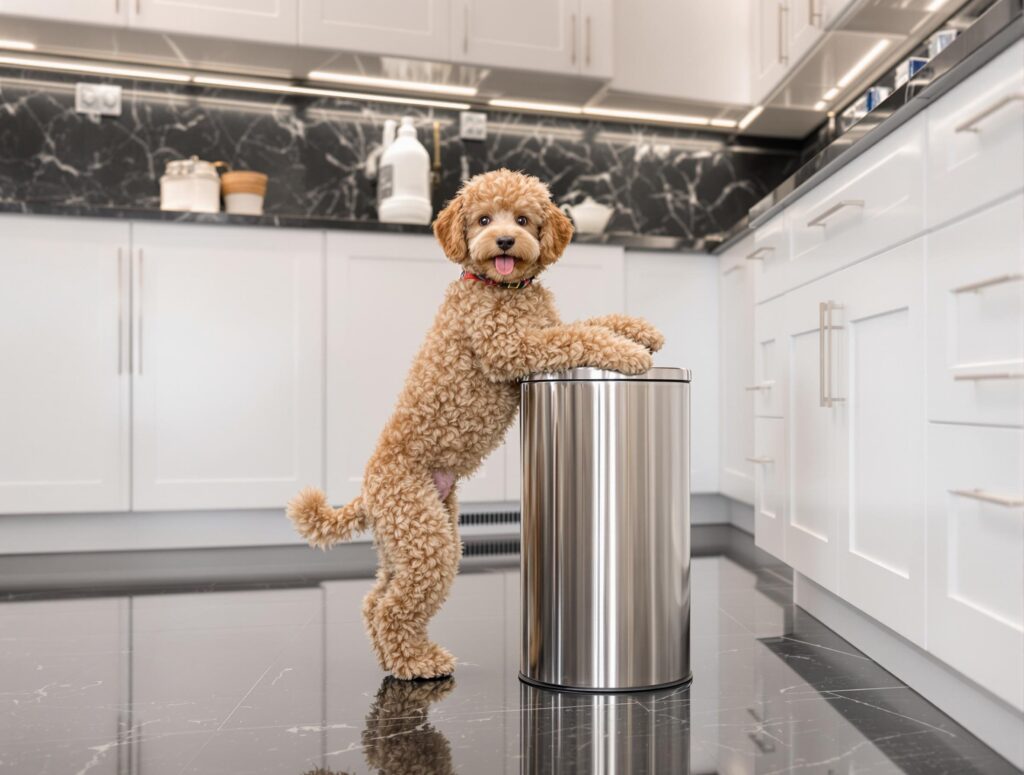
Training Your Dog to Avoid the Trash
Teaching your dog to stay away from garbage creates a safer home while strengthening your bond. These simple training tips make the process enjoyable for both you and your pet.
- Start with the “leave it” command using favorite treats.
- Offer toy swaps when your pup shows interest in the trash.
- Practice calm walks past trash areas, rewarding good choices.
- Reward your dog for choosing appropriate spaces.
- Feed regular meals on schedule to reduce food seeking behavior.
DIY Solutions to Dog Proof a Regular Garbage Can
Specialized dog proof trash cans are effective, but they can also be expensive. With a little creativity, you can turn almost any regular garbage can into a secure, pet resistant container.
Anchor the Bin
Install two heavy duty adhesive or screw in hooks on the wall behind the can. Use nylon straps or a sturdy bungee cord to secure it.
Repurpose Child Safety Locks
Cabinet locks can secure the lid of your garbage can. Attach one end to the lid and the other to the side for a latch your dog cannot break.
Add a Weighted Base
Place a sandbag, bricks wrapped in cloth, or a weighted plant base inside the can’s outer shell.
Upgrade the Lid
Attach a simple hasp and latch or hook and eye closure for a more secure lid.
Frequently Asked Questions
Are there specific trash cans that work best for homes with dogs?
Yes, dog proof trash cans come in many styles. Look for options with step pedals, touchless lids, or heavy duty models that are hard to knock over. Stainless steel models are more resistant to chewing, and cans with motion sensors or locks offer extra security.
Should I be concerned if my dog eats tissues or paper towels from the trash?
Yes. Paper can cause digestive upset or a blockage if swallowed in large amounts. Paper towels with food, grease, or cleaning chemicals can also be harmful. If your dog frequently eats non food items, it may be a sign of pica and should be discussed with your vet.
What should I do if my dog got into the trash?
Stay calm and check what they may have eaten. Watch for symptoms like vomiting, diarrhea, or lack of appetite. When in doubt, call your vet.
Can eating out of the trash cause long term health issues?
Yes. Eating spoiled or toxic food can lead to pancreatitis, gastrointestinal blockages, or poisoning. Problems can appear hours or days later, so prevention is key.
Creating a Safe and Clean Home for Your Pet
Trash raiding might be a natural instinct for dogs, but it does not have to be part of your daily routine. With secure storage, smart deterrents, and consistent training, you can help your dog avoid the trash and stay safe.
For essentials that support your dog’s wellbeing including supplements, treats, and vet approved supplies browse PetMeds’ selection of products at 1800PetMeds.


